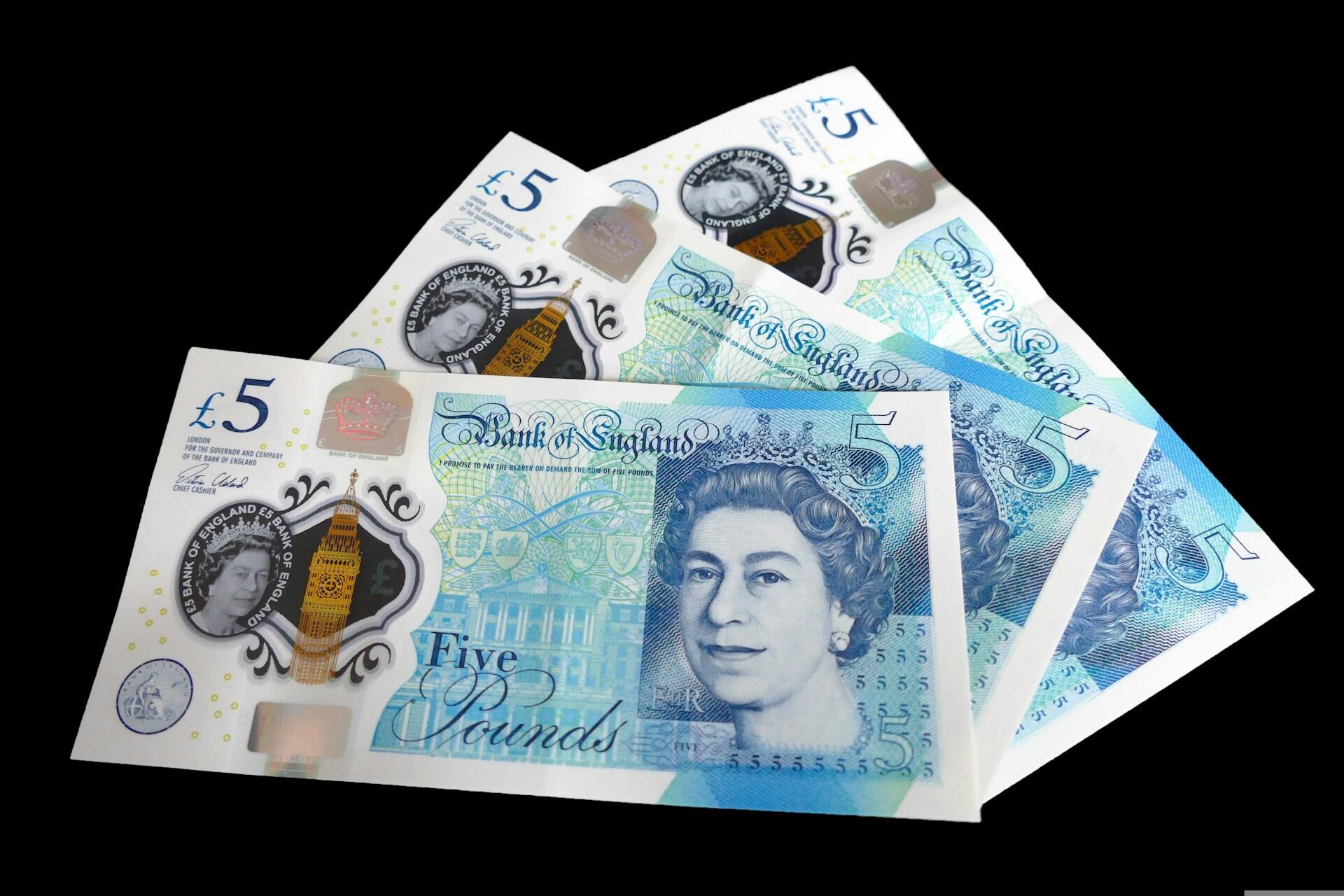Whether you're starting a new job, taking on a side job, or trying to understand your payslip, it helps to know how tax works in the UK. It can seem complicated at first, but you can simplify it. Here's how taxation works in 2025/26.

Understanding How UK Income Tax Works
The UK government uses income tax as the main way it raises money for public services like the NHS, schools, and infrastructure. It's paid based on the money you earn from work, pensions or savings. Every UK resident's taxes start with their personal allowance, which is the amount they can earn before paying tax. After that, you'll pay tax on that part of your income in bands.
for the 2025/26 tax year.
The tax year runs from 6 April 2025 to 5 April 2026. HM Revenue & Customs (HMRC) collects taxes through PAYE (Pay As You Earn) if you're employed or through Self Assessment if you're self-employed or have other sources of income. It's essential you know how these systems work.
5 Quick Facts About UK Income Tax
What Are the UK Tax Bands and Rates?

The amount of tax you pay in the UK will depend on which tax band your income falls into. In the UK, the tax system is progressive, which means that the more you earn, the higher the percentage you pay on your income above each threshold. These bands are reviewed each year by the government, but have remained frozen since 2021.
For the 2025/26 tax year, the main rates for England, Wales, and Northern Ireland are:
In Scotland, different rates apply:

These differences mean someone earning £35,000 in Scotland may pay slightly more tax than someone in England, even though the system operates under the same HMRC umbrella.
| Band | Income Range (England, Wales & N. Ireland) | Rate (England, Wales & N. Ireland) | Income Range (Scotland) | Rate (Scotland) |
|---|---|---|---|---|
| Personal Allowance | Up to £12,570 | 0% | Up to £12,570 | 0% |
| Starter / Basic Rate | £12,571 – £50,270 | 20% | £12,571 – £14,876 (Starter) | 19% |
| Basic / Intermediate Rate | – | – | £14,877 – £26,561 (Basic) | 20% |
| Intermediate / Higher Rate | £50,271 – £125,140 (Higher) | 40% | £26,562 – £43,662 (Intermediate) | 21% |
| Higher / Advanced Rate | £125,141 + (Additional) | 45% | £43,663 – £75,000 (Higher) | 42% |
| Advanced / Top Rate | – | – | £75,001 – £125,140 (Advanced) | 45% |
| Top Rate | – | – | Over £125,140 (Top) | 48% |
The Personal Allowance and When It Changes
Since the personal allowance is set at £12,570 per year and has been since 2021, if you earn under this amount, you won't pay any income tax at all. Once you do, you'll start paying tax at the rates outlined above.
The personal allowance gradually reduces for higher earners, meaning those earning over £100,000 will see their allowance decrease by £1 for every £2 they earn. By the time somebody earns £125,140, their allowance is reduced to £0 and they're taxed on all their income.

Those married or in a civil partnership benefit from the Marriage Allowance, which allows one partner to transfer up to £1,260 of their personal allowance to the other, provided the recipient is a basic rate taxpayer.
How To Calculate Your Income Tax
Once you know your tax band and personal allowance, you can work out how much you owe. Since the UK uses a progressive tax system, your income is divided into parts, with each part taxed at a different rate.
Here’s a simple step-by-step method:
- Find your total annual income — from salary, bonuses, or other taxable sources.
- Subtract your personal allowance (£12,570 for 2025/26).
- Apply each tax rate to the correct portion of your remaining income.
- Add up each amount of tax to find your total tax owed for the year.
For example, if you earn £35,000 a year:
- The first £12,570 is tax-free.
- The next £22,430 (£35,000 – £12,570) is taxed at 20%, which equals £4,486.
- So, your total income tax is £4,486 per year (not including National Insurance).
COLUMNS:
Gross Annual Income
- £20,000
- £35,000
- £60,000
Tax Paid (Approx.)
- £1,486
- £4,486
- £9,486
Estimated Net Income
- £18,514
- £30,514
- £50,514
National Insurance Contributions Explained
Most workers in the UK also pay National Insurance (NI). This is mainly used to fund the State Pension, maternity allowance, and Jobseeker's Allowance. If you're employed, NI is automatically deducted from your wages through PAYE.
For the 2025/26 tax year, the rates are:
Your employer also contributes 15% on top of your salary as their portion of NI. You won't see this on your payslip, but it's part of the total cost of employing you. If you're self-employed, you pay NI through your Self Assessment return:
These rates can change each April, so it’s worth checking the latest HMRC tables before filing or budgeting.

What About Student Loans and Other Deductions?
Student loan repayments, pension contributions, or workplace benefits are all calculated separately from income tax, but appear on your payslip. If you went to university in the UK, your repayments start once you earn above a certain threshold.
For the 2025/26 tax year, these thresholds are:
You pay 9% of anything you earn over your threshold (6% for postgraduate loans). These deductions are automatic if you’re employed, or included in your Self Assessment if you’re self-employed.
Many employers automatically enrol staff into a workplace pension scheme. Your contributions are tax-efficient because they're usually taken before income tax is applied.
The minimum total contribution is generally 8% of qualifying earnings (with at least 3% from your employer).
Your payslip might also include:
Do I Pay Tax on Savings, Pensions, or Benefits?
For those who have income from sources other than their job, it may be taxed depending on its source. The UK tax system treats savings, pensions, and benefits as separate income categories, each with its own allowances and rules.
Savings and Interest
You’ll usually pay tax on interest you earn from your savings, but most people qualify for the Personal Savings Allowance (PSA):
If your total income (including savings interest) is below £18,570, you may also qualify for the Starting Rate for Savings, which lets you earn up to £5,000 of interest tax-free.
Interest from ISAs (Individual Savings Accounts) is always tax-free, regardless of how much you earn.
Pensions
When you start drawing a pension, 25% of your pot is usually tax-free, while the remaining 75% is taxed as income.
If you receive a State Pension, it's taxable too — but HMRC adjusts your tax code so that it's included automatically if you also have an employer pension or salary.
Benefits
Most government benefits, such as Universal Credit and Disability Living Allowance (DLA), are not taxable. However, some benefits, like Jobseeker's Allowance (JSA) and Carer's Allowance, are taxable and count toward your total income for the year.
Tax on Multiple Income Sources
Even if you earn from multiple sources like a full-time job, part-time work, or freelance projects, you'll still only have one personal allowance. However, different sources may be taxed differently. This depends on how it's paid and reported to HMRC.

Employment and Side Income
If you have two jobs, your main job will use your full personal allowance, while your second job will usually have a tax code like BR, meaning all income from that role is taxed at 20%.
If you start earning more from your second job, you can ask HMRC to split your allowance between them to avoid overpaying.
Freelance or Self-Employed Income
If you're self-employed or run a side business, you must declare that income through a Self Assessment tax return.
You'll pay tax at the same rates as your employment income, but you can deduct business expenses before calculating your taxable profit.
Rental, Dividends, and Savings
Income from rental properties, dividends, or savings interest may also be taxable.
However, there are small allowances that apply:
If your total income from all sources exceeds your tax band thresholds, HMRC will adjust your tax code or issue a Self Assessment notice to collect the difference.
Tools To Help You Estimate Your Tax
It can be tricky calculating your tax, especially if you have multiple income streams or deductions. Luckily, there's a free HMRC online calculator you can use. There are also some other tools we recommend considering for calculating your tax.
HMRC’s Online Calculator
The Income Tax and PAYE Calculator on GOV.UK lets you enter your annual or monthly earnings, pension contributions, and student loan plan to estimate your take-home pay after deductions. It uses the most up-to-date tax bands and thresholds for your region (England, Wales, Northern Ireland, or Scotland).
Other Useful Tools
You can also try:
Final Tips: Checking You’re Paying the Right Amount
Now that you understand how income tax and National Insurance work, we recommend checking that you're paying the correct amount. While most people have their income tax paid through PAYE, there can be mistakes.
Here are a few ways to make sure everything adds up correctly:
References
- GOV.UK Income Tax: Introduction https://www.gov.uk/income-tax
- GOV.UK National Insurance: introduction https://www.gov.uk/national-insurance
- GOV.UK VAT rates https://www.gov.uk/vat-rates
- GOV.UK Check your Council Tax band https://www.gov.uk/council-tax-bands
- GOV.UK Corporation Tax https://www.gov.uk/corporation-tax
- GOV.UK Capital Gains Tax: what you pay it on, rates and allowances https://www.gov.uk/capital-gains-tax
- GOV.UK How Inheritance Tax works: thresholds, rules and allowances https://www.gov.uk/inheritance-tax
- HMRC: Official Website https://www.gov.uk/government/organisations/hm-revenue-customs
- GOV.UK Rates and thresholds for employers 2025 to 2026 https://www.gov.uk/guidance/rates-and-thresholds-for-employers-2025-to-2026















